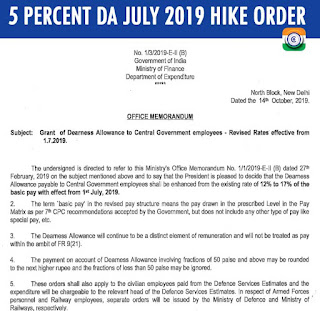Central
government is set to recruit 2.2 lakh central government employees over
a period of two years from March 1, 2015, despite the Centre’s
announcements from time to time on a freeze in fresh recruitments.
The central government’s actual staff on March 1, 2015 was 33.05 lakh, which increased to 34.93 lakh in 2016 and is estimated to grow to 35.23 lakh by March 1, 2017, according to the budget estimates for 2016-17.
This includes the railways — which has not added a single worker to its strength of 13,26,437 in the last three years — but excludes the defence forces.
The biggest increase of 70,000 is projected in the revenue department which comprises income tax and customs, central excise and service tax, followed by central paramilitary forces, projected to rise by 47,000. The strength of the home ministry, excluding paramilitary forces, has increased by 6,000.
The cabinet secretariat, a fairly small department assisting the government, will add 301 employees, going up from 900 in 2015 to 1,201 by March 1, 2017. The I&B ministry added nearly 2,200 personnel in the last two years.
The personnel ministry, which manages government staff, added 1,800 jobs in the last two years, the urban development ministry 6,000, mines ministry 4,399 and department of space 1,000.
However, the financial allocation for salaries and allowances for the revenue department has not shown any major difference, for the reason that the department has not been able to recruit personnel due to slow progress in the cadre restructuring exercise.
Some departments have faced downsizing. Interestingly, there has been a cut in the department of rural development, the focus area of the government, where the strength has come down from 538 in 2015 to 472 in 2016-17.
A major reason for the spurt in hiring is that many departments faced acute staff crunch in Group B and C categories due to a moratorium on fresh recruitments for the past several years.
A lot of the new appointments have been in these categories. Vacancies have piled up over the years. More than six lakh posts are vacant in various central government ministries, according to the personnel ministry.
The central government’s actual staff on March 1, 2015 was 33.05 lakh, which increased to 34.93 lakh in 2016 and is estimated to grow to 35.23 lakh by March 1, 2017, according to the budget estimates for 2016-17.
This includes the railways — which has not added a single worker to its strength of 13,26,437 in the last three years — but excludes the defence forces.
The biggest increase of 70,000 is projected in the revenue department which comprises income tax and customs, central excise and service tax, followed by central paramilitary forces, projected to rise by 47,000. The strength of the home ministry, excluding paramilitary forces, has increased by 6,000.
The cabinet secretariat, a fairly small department assisting the government, will add 301 employees, going up from 900 in 2015 to 1,201 by March 1, 2017. The I&B ministry added nearly 2,200 personnel in the last two years.
The personnel ministry, which manages government staff, added 1,800 jobs in the last two years, the urban development ministry 6,000, mines ministry 4,399 and department of space 1,000.
However, the financial allocation for salaries and allowances for the revenue department has not shown any major difference, for the reason that the department has not been able to recruit personnel due to slow progress in the cadre restructuring exercise.
Some departments have faced downsizing. Interestingly, there has been a cut in the department of rural development, the focus area of the government, where the strength has come down from 538 in 2015 to 472 in 2016-17.
A major reason for the spurt in hiring is that many departments faced acute staff crunch in Group B and C categories due to a moratorium on fresh recruitments for the past several years.
A lot of the new appointments have been in these categories. Vacancies have piled up over the years. More than six lakh posts are vacant in various central government ministries, according to the personnel ministry.








0 comments:
Post a Comment